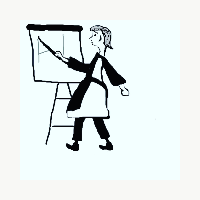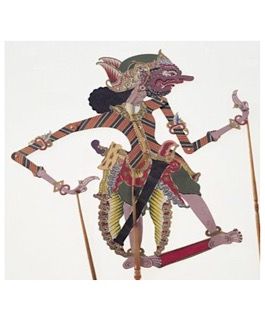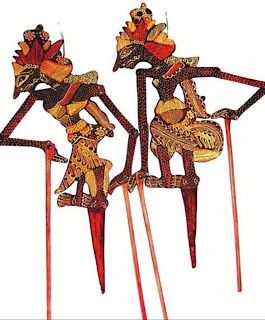Subscriber Feedback on Puppets

It’s your editor back after enjoying the outstanding blog contributions from Jane of Sandringham. Her experience in the arts is universal and we are so lucky that she is willing to share her knowledge with us. Thank you Jane - you’re a star.
I have also received delightful comments from R of Manila who has an interest in the Puppets of Indonesia. R of Manila writes:
Loved the research you did on Wheel art, it was facinating to see the beauty of bicycles in art (which one never notices). Interesting read on Els Quatre Gats and the puppetry done by Ramon Casas. It was right up my alley.
Thought its worth a mention that shadow puppets are a traditional performing art in Indonesia as well. I have watched some puppet shows there, they go on for hours, sometimes overnight. The art (wayang kulit) has so much depth, creativity and sophistication - all in the hand of the puppet master (dalang).
R of Manila goes on to include some very interesting information:
It has been debated whether or not puppetry is indigenous to Indonesia or was introduced from India or China. Indigenous origins are argued by scholars who point toward connections between the jesters and ancestral spirits. The term for puppetry, wayang, comes from the Indonesian word for shadow bayang. Wayang kulit, shadow puppetry using figures made from water buffalo hide, is considered to be the oldest freestanding puppet form; the earliest references to it date from the 800s.
Even today in some areas of Indonesia, carvings, puppets, and gongs are considered by some to be objects that ancestral spirits can temporarily inhabit. Performances of puppetry are still held once a year at cemeteries where the founders of each village are buried. Ancestors are believed to have particular favorite stories. There is evidence that local animism has been a source of the puppet arts. In times past, if the harvest was threatened by various pests, the story of the Indonesian rice goddess, Sri, might be performed to ward off the attack. Today, such ritual stories are performed infrequently, but they remain a part of the history of the art.
Regardless of whether the impulse behind wayang is indigenous, widespread development of the art took place during the Hindu-Buddhist period, especially between 800 and 1500.
(Ref: http://education.asianart.org/explore-resources/background-information/history-indonesian-puppet-theater-wayang)


R concludes with a comment arising from the Blog link I provided on the Music Loved by Some Artists. R wrote: I am listening to Bob Dylan and Stevie Wonder after many years. Thanks for the link. Loving it, loving it, loving it.
Thank you R of Manila - we love your contribution to the blog.
Credits: Wikipedia and Indonesian art Sumunar
Hero Image: The Dr. Walter Angst and Sir Henry Ancestry Collection of Indonesian Puppets. Yale Southeast Asia Studies- Yale University.
Tomorrow it’s back to the theatre to look at scenery and then onto theatrical costumes.
